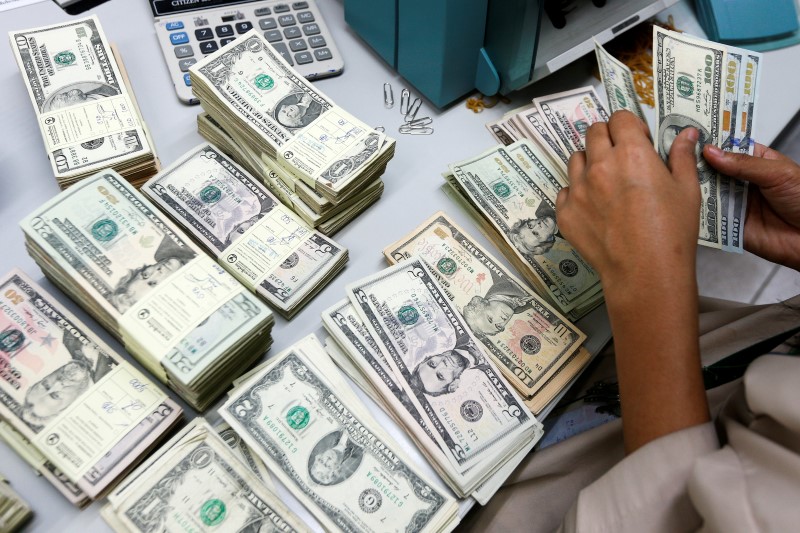By Anirban Nag
LONDON (Reuters) - The dollar fell against a basket of currencies on Wednesday as investors re-evaluated whether the Federal Reserve will raise interest rates this year, which also sent the higher-yielding Australian dollar to its loftiest level since late April.
The U.S. dollar sagged against the euro and the yen after downbeat productivity data sapped some of the momentum it had gained from last week's robust jobs report.
U.S. Treasury yields (US10YT=RR) fell after the productivity report suggested the economy may not be growing as quickly as anticipated, prompting investors to cut long-term inflation expectations. According to CME's Fedwatch, investors have trimmed chances of a rate rise in December 2016. [L1N1AQ0EN]
The dollar was down 0.6 percent at 101.28 yen
The dollar index (DXY) dropped 0.6 percent to 95.577.
"The release of the third consecutive decline in quarterly U.S. productivity – the worst run since at least 1980 – does not bode well for the prospects for the dollar," Morgan Stanley (NYSE:MS) head of currency strategy, Hans Redeker, said.
The Australian dollar advanced to a more than three-month peak of $0.7729
"Part of the Australian dollar's resilience is the lack of follow-through in pricing for a Fed hike in September, limiting the U.S. dollar's gains," analysts at Westpac said in a note. They recommended investors to buy the Australian dollar.
The U.S. dollar's weakness also gave struggling sterling a lift. The pound was up 0.5 percent at $1.3061
The pound took a knock on Tuesday after Bank of England policymaker Ian McCafferty said more monetary easing was likely to be needed if the UK's economic decline worsened.
In European trade, attention briefly turned to the Norwegian crown. The crown scaled its highest against the euro in more than a month, after inflation rose more than expected in July, sapping expectations of interest rate cuts in the near term from the Norges Bank.
Data showed July core inflation rose to 3.7 percent from a year ago, beating expectations of a 3.1 percent rise. For the month, core inflation rose 0.7 percent.
The euro fell 0.8 percent to 9.2575 crowns (EURNOK=D4), its lowest since July 5, and down from around 9.33 beforehand.

Earlier, Nordea Markets said the Norwegian policy rate had bottomed out at 0.50 percent and the central bank was no longer expected to cut rates in September.